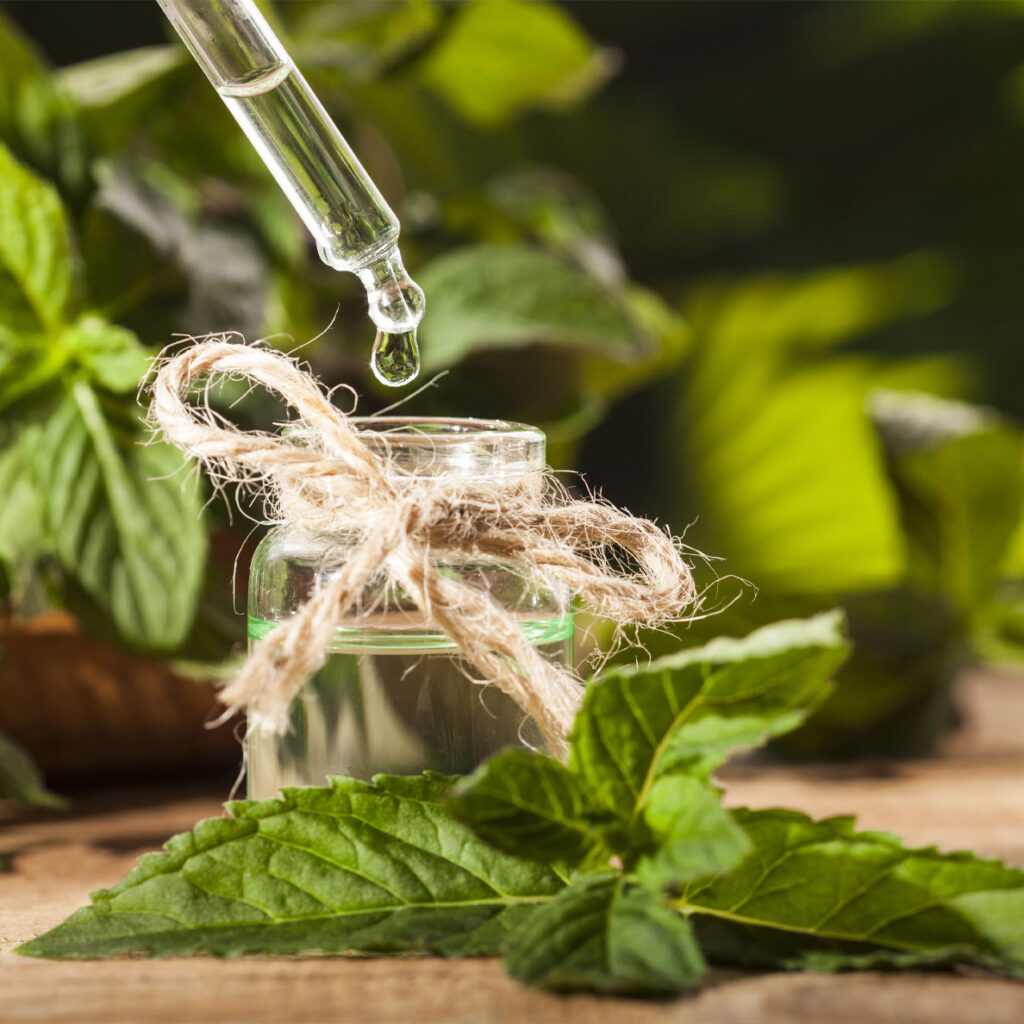Energy Healing Modalities
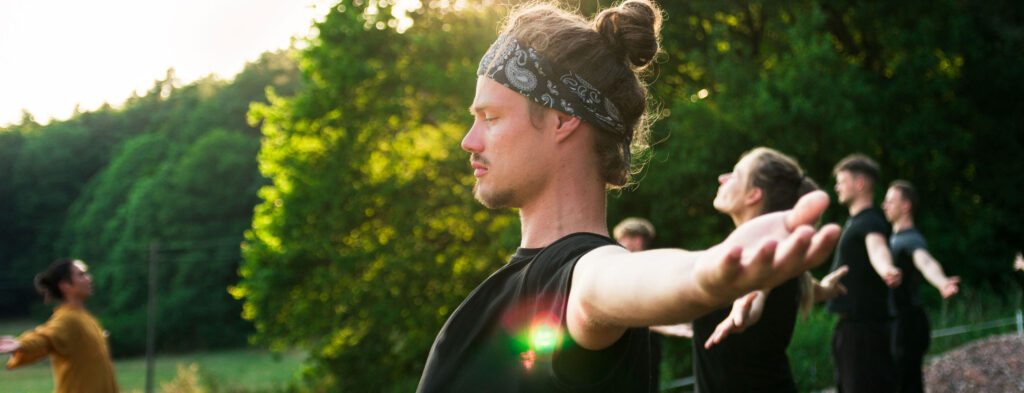
The one thing that is undoubtedly universal amongst all of us is energy. It is the pervasive force that allows for life to exist and flourish, yet our westernized minds are often reluctant to embrace it as something that should be considered in medicine. Meanwhile, it is the focus of many ancient eastern health practices and remedies
So for the things that commonly ail us, and it can be used as a supplement to the prescribed medicine that we know to be tried and true. So what is energy healing and how can you implement it into your life to benefit your health and wellbeing?
How Does Energy Healing Work?
Depending on the method, energy healing focuses on the life force that flows through all of us; that force that dictates our mood, health, energy, and ability to connect with other beings. In Chinese and Japanese culture that force is referred to as ki or qi (pronounced: chi). In India, it is known as prana the energy that spins and flows through the chakras, an intangible force that cannot be comprehended in the materialist sense.
Although the perspective of western science and medicine often labels energy healing as pseudoscientific, the perception is starting to change as scientists and academics begin to understand the principles behind the techniques and benefits that have been known to eastern cultures for centuries. The learnings and breakthroughs in quantum physics have brought the understanding of the pervasiveness of energy to the forefront of western thought. Not only do our bodies consist of and run on energy in every aspect of their function, but there is an omnipresent field of energy throughout the universe that is now being studied via quantum field theory. This universal energy known to eastern cultures and the newly discovered quantum field are talking about the same thing, disagreeing simply over semantics.
Influencing this flow of energy by implementing physical and mental awareness and intention, can bring about profound and replicable results. Through meditation, physical touch, and exercise our energy bodies can be altered to provide higher states of health, consciousness and, you guessed it, energy. These energy healing techniques can help you find an approach that is right for you and lead you on a path to healing and sustained health, either as a primary or supplemental modality.
Qigong
One of the fundamental practices of energy healing and exercise based on the Chinese concept of qi, qigong is concerned with balancing the flow of energy throughout the body. Much like Tai Chi or yoga, qigong cultivates the life force through a series of body postures, breathing, and meditation. It is also used as a foundational practice for martial arts, as it develops balance, agility, and muscle strength.
Qigong practitioners aim to develop higher levels of awareness, reduced anxiety, and a clearer vision of one’s purpose in life. It is often used as an effective practice in sports medicine, particularly with the elderly, due to its slow and controlled movements that aim to develop stability and ease tension. It has even been endorsed by the Harvard School of Medicine for its therapeutic benefits.
Qigong works by opening up blocked meridians, or the routes through which qi flows, in order to allow for unimpeded movement of energy throughout the body. The philosophy of qigong posits that blocked energy is the cause of illness and disease. By opening up these passages, we can prevent ailments or reopen the flow of energy to begin the healing process when we are sick.
Chinese Meridians and Acupuncture
The meridians are a map of routes within our body, through which qi energy flows. These meridians correspond with the connections and routes of muscles, endocrine glands and the nervous system. There are over 600 points on the body that acupuncture targets with thin needles that are directly connected to major organs and bodily systems. These connections are made through the meridians and collaterals, the vessels associated with meridians.
Knowledge of these meridians and collaterals is thought of very highly in Chinese culture and is considered equally as important as a doctor’s knowledge of our anatomy. Acupuncture is thought to promote the release of certain adrenal hormones like ACTH and cortisol that can help with certain bodily pains and organ function. It is even thought to have the potential to cure or help with overcoming addictions.
Of all of the different types of Traditional Chinese Medicine, acupuncture has gained the most notoriety, specifically as a complimentary modality to modern medicine. It has been widely embraced by doctors and patients throughout the western world, and could be one of the keys to a broader acceptance of eastern alternative medicine. Though needles are involved, the process is virtually painless and often relaxing.
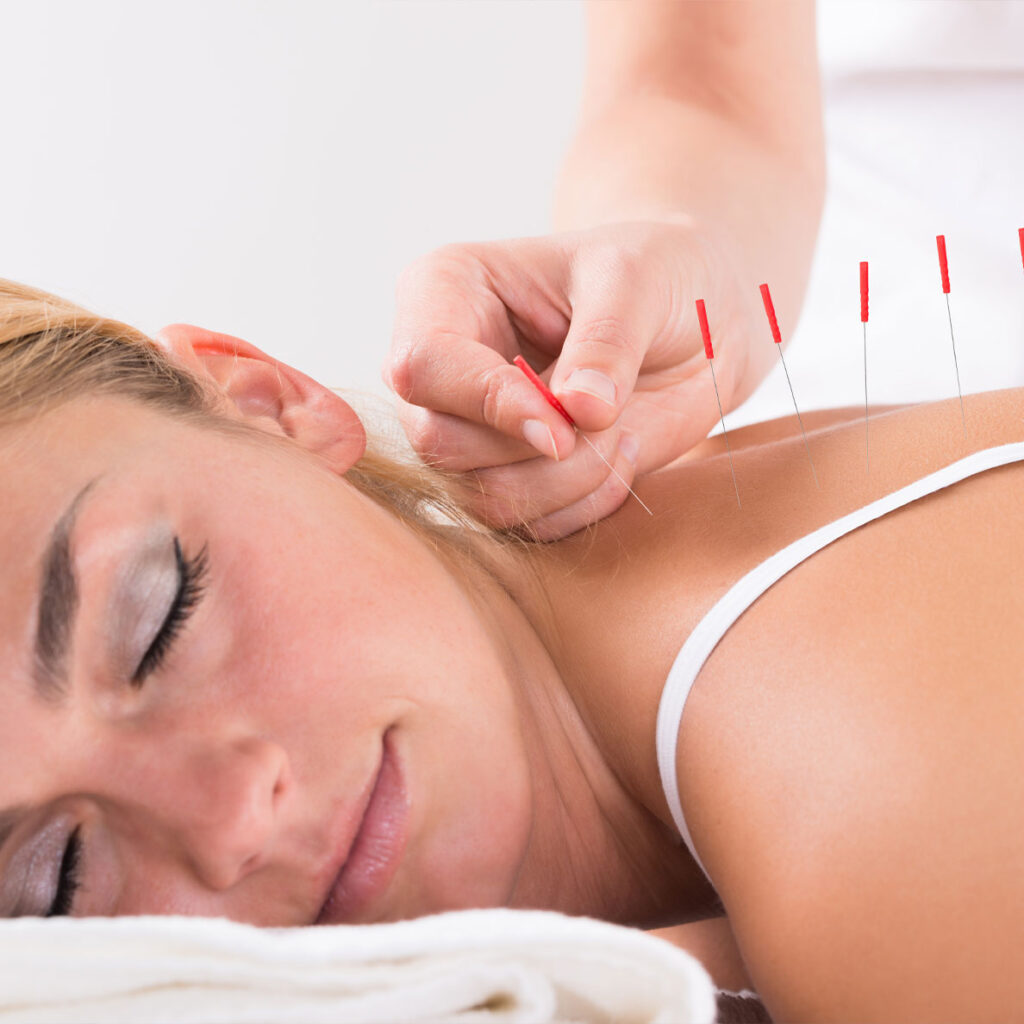
Acupuncture has been found to treat a number of mental ailments like depression, anxiety, and negative moods. It has also had a positive impact on deeper physical issues like digestive problems and chronic pain.
Reflexology
Reflexology finds its roots in the Chinese focus on balancing the flow of qi, but primarily targets the hands, ears, and feet. Different locations on our feet and hands are thought to have direct connections through the meridians to different organs and systems in our body that can be detoxed and positively influenced. Through a targeted and sometimes intense massage, reflexology frees up blocked energy through stimulation, muscle relaxation, and the encouragement of lymph flow.
Reflexology is said to cleanse the body of toxins, boost the immune system, balance energy, and increase circulation. After a reflexology foot massage, one might feel like they are walking on air or feel lighter in their stride. Though these immediately noticeable effects can be fleeting, the unseen, internal effects can provide a longer lasting benefit.
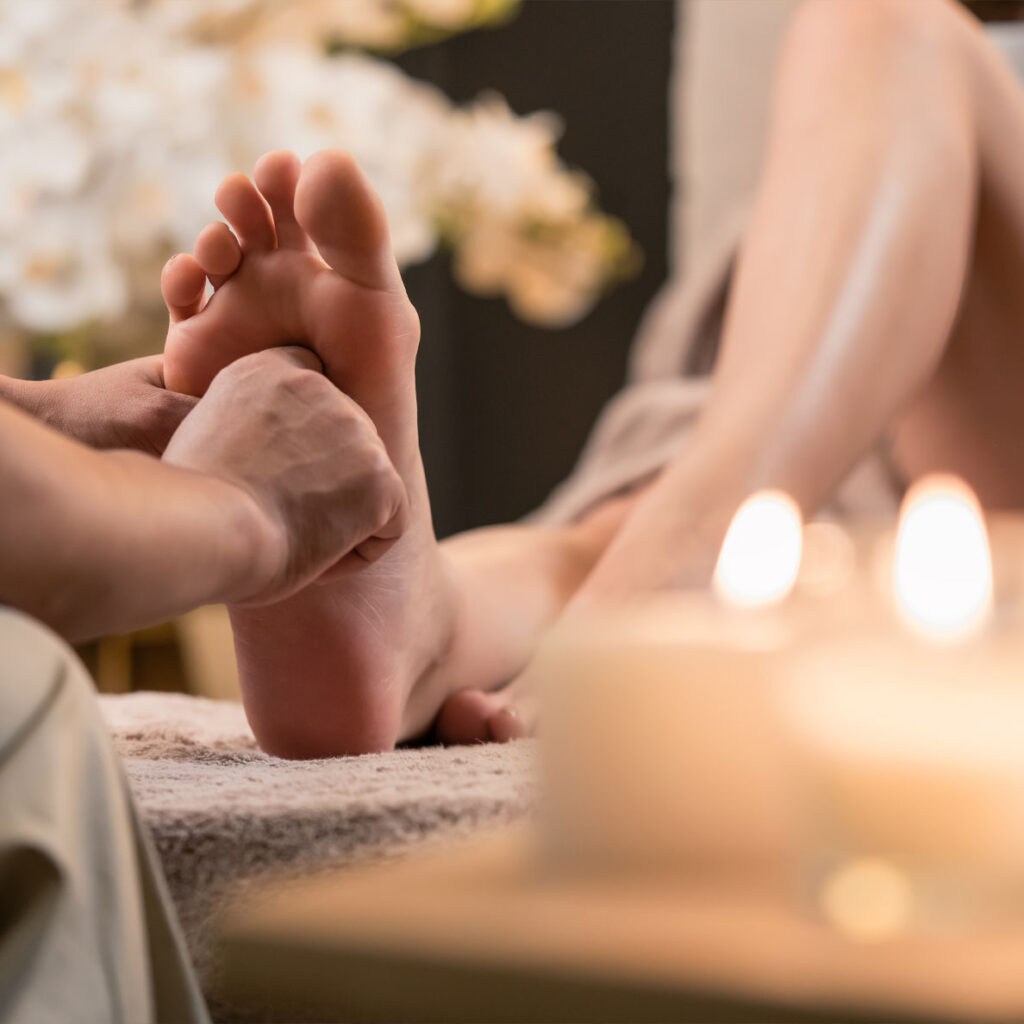
Chakra Healing
The Chakras are the ancient Indian conception of our body’s primary energy centers and are very similar in nature to the ancient Chinese conception. The word chakra translates literally to wheel and is thought to be one of seven spinning centers of energy found in our bodies. Our chakras, based on their location, are connected to key endocrine glands and areas of nervous system function throughout the body, much like the Chinese meridians.
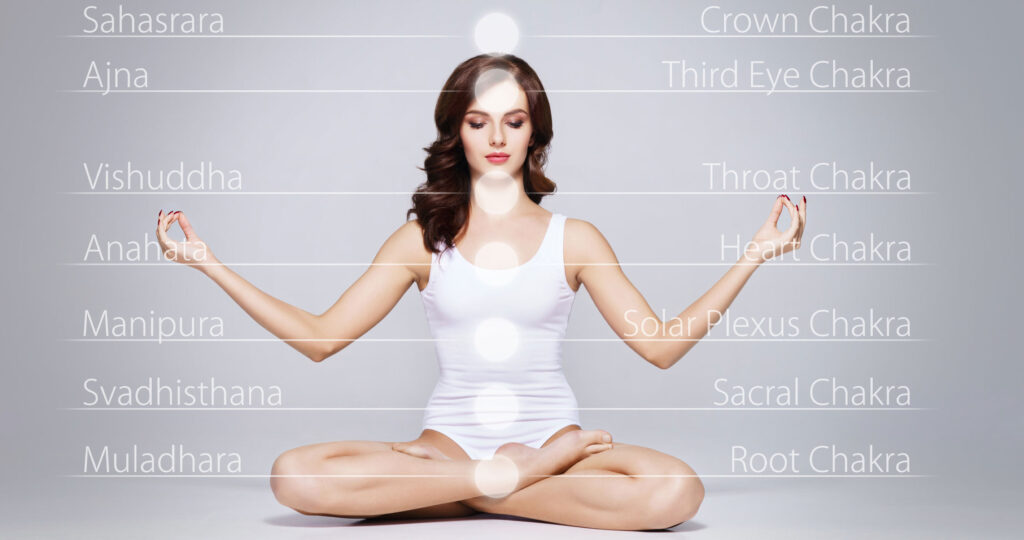
The seven Chakras are located in alignment from the top of our head, to the base of our spine and, when functioning in synchronicity, allow for a steady flow of energy throughout the body. Much like the Chinese yin-yang balance of qi, the energy in our chakras must be properly balanced. It doesn’t make sense to have an overabundance of energy in one chakra and a deficiency in another. Chakras also have the ability to spin in different direction, allowing for the outward and inward flow of energy. Our chakras tend not to spin when we experience negativity, sadness and anger. In order to open up chakras we use breathing techniques, meditation and intention to eliminate negativity and open up to the flow of positive energy.
The seven chakras are as follows:
- Muladhara or Root Chakra: Base of Spine (tailbone)
- Swadhisthana or Sacral Chakra: Two inches below the navel
- Manipuraka or Solar Plexus Chakra: Three inches above navel
- Anahata or Heart Chakra: Located at Heart
- Vishuddhi or Throat Chakra: Located at Throat
- Sahasrara or Third Eye: Center of Forehead/Middle of Eyebrows
- Brahmarandra or Crown Chakra: Top of Head
Chakras and the Spine
We understand the physical importance of our spine, which is a framework for the nervous system while giving structure to the body. The spine is also an important facet of spiritual health; many traditions regard the spine with significance, as it is the main channel through which all subtle energies flow.
The spine holds important codes for our soul’s potential as our latent DNA/RNA pulsates within. When we learn to be in tune with our spinal health, a wealth of information is available, which can help us better masters ourselves.
Sitting with a straight spine is crucial but it should be exercised at your own level of comfort. When we lengthen the spine, it is easier to connect with cosmic and earth energies. Do not make yourself uncomfortable by trying to maintain a “straight spine.” Any preoccupation with form will only distract and nullify any healing effects.
Visualization
Seeing chakras is a marvelous gift, but not something all are able to do. When we use the word “visualize,” imagine feeling and experiencing rather than seeing. Psychic senses are elusive and many psychics are unable to “see,” but use other methods of perception instead.
Feel the color, shape, and texture of each chakra. Engage other senses to navigate, and don’t get hung up on the word “visualize.”
How to Align Your Chakras with Meditation
- Sit comfortably with your spine lengthened and begin to breathe deeply but gently. Close your eyes to bless yourself with total presence during this meditation.
- Imagine a brown (or black) ball of energy at your feet. Breathe with it and allow it to expand to the size of a beach ball. This is the Earth Star Chakra and will begin to help you pulsate with the heartbeat of the Earth.
- Moving into your body, bring your attention to your Root Chakra. For some of us, this is at the perineum for others it’s between the thighs. Feel and trust your own way!
- See the Root as a red glowing orb. Feel with it gradually and expand it to the size of a beach ball.
- Bringing your attention to your sacral chakra, feel the warm orange glow and expand or decrease it to match the size of the other two.
- Continue moving up your body to the solar plexus and allow the warmth of the sun to charge this yellow chakra. Expand its size to be in alignment with those already balanced below.
- Feel the inviting green of your heart chakra and breathe into it until it too is a consistent size.
- Bring yourself to the blue of your throat, breathing with it until its size matches those below.
- The 3rd eye chakra will emit an indigo-colored light deeper and more powerful than the blue of your throat. This one may take a bit more care and patience or, in the case of highly sensitive people, it may be noticeably out of whack with the others. Be patient as it comes into alignment with the other chakras.
- Drifting upward to the crown feel the vibrant violet that resides there. Effortlessly allow its size to match that of the others.
- The platinum (white or gold) light will be our final place of attention. Residing about six inches above the crown, this chakra connects us to the galactic realms giving us a direct connection with our deeper soul. Be with it until it too reaches the size of the others.
- With all chakras balanced, thank yourself for this loving attention you have just shared and commit yourself to get to be present with each more often.
- Gently open your eyes and carry on with the ways of feeling more of yourself in the world!
As you deepen your chakra meditations, you will experience more of your truth. Befriend the wisdom of each energy center, and allow yourself to embody if even for a moment, the frequency you’re perceiving. What may initially be a simple exercise could form the basis of a whole new path of experience.
Reiki
This Japanese technique was developed in the early 20th century by Mikao Usui based on the five principles of Japan’s emperor, Meiji. They are:
- Don’t get angry
- Don’t worry
- Be grateful
- Work diligently
- Be kind to others
Reiki is also based on the idea of the flowing life force known in Japanese as ki. The practice was developed to help people realize the importance of making an intentional effort to heal and be conscious of their health. This concept of self-improvement and self-discipline, that is a characteristic of Japanese culture, encourages Reiki practitioners to incorporate energy healing into their lives, but to also take an active role in healing oneself.
Reiki is a spiritual practice with its root word, Rei, roughly translating to “God’s wisdom” or “a higher power’s wisdom,” though it is not religious. Rather, it is based on this recurrent concept of the unseen life force that flows between us that can be channeled and used for beneficial means. Reiki uses palm-healing or hands-on-healing to transfer, balance, and realign energy from the healer to the recipient. Some universities throughout the US have even begun to incorporate reiki classes into certain curricula.
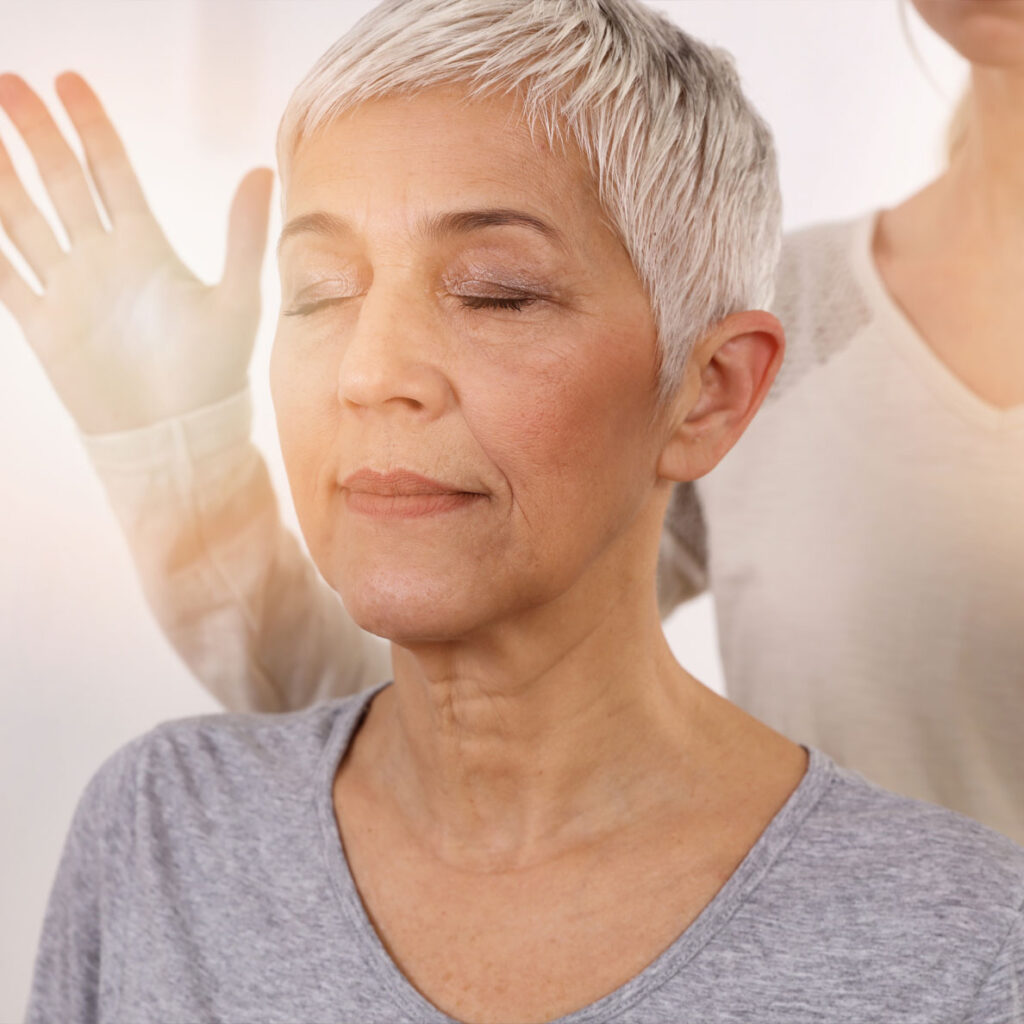
There are many commonalities that can be seen between these different methods of energy healing and it makes sense that they are all so similar. Though these time-tested traditions varied semantically, they all understood the flow of energy throughout our bodies and its importance in our health and wellbeing. Which one of these methods have you had success with and which will you implement in your life?
SOUND AND OTHER HEALING TOOLS
One of the earliest forms of healing, sound healing techniques and tools use sound resonance to increase vibrational health and well-being. One of the most popular sound healing tools are tuning forks. Based on the acoustic resonance tools musicians use to create a harmonic and unified tone, tuning fork therapy applies heated metal tuning forks to different parts of the body, to promote healing, emotional wellness, and to relieve pain, anxiety, and stress.
The placement of the tuning forks is often compared to acupuncture, substituting sound frequencies to stimulate the meridians instead of needles. Recent research has suggested that tuning fork therapy is beneficial in the treatment of muscle and bone discomfort.
Singing Bowls: Whether made from copper alloy or crystal, singing bowls create different healing sounds either through by a mallet gently stroked on the inside of the bowl, or with the use of water inside. Used to evoke tones associated with chakra centers and in meditation, recent medical research has also shown the healing power of singing bowls for those suffering from chronic pain, as well as mood disorders, stress, and anxiety…
Pendulums: Made from natural materials including crystal, metal, glass, and wood, pendulums can be beneficial in setting intentions, pondering difficult life choices, and for creating more balance in the energetic field, or chakras. Similar to dowsing, pendulums are used to uncover and heal blocks in energy, as well as to receive guidance, and develop one’s intuition and sense of reflection.
Essential Oils: Derived from plants, flowers, roots, seeds, and other environmental elements, essential oils are used to balance and clear energies, help relieve stress, improve concentration, and assist in integrated health. “Essential oils work primarily on an energetic level — especially when they are used as a scent only, rather than applied directly to the skin. They clear out the “auric debris” (congested energy), thus making way for the field to shift into balance-back into a harmonious whole.”
Essential oils have benefits that are up to 100 times more powerful than their dried herb counterparts because of their concentrated property. Therefore, it’s no surprise that they can do incredible things to heal your aches, skin and even psyche!
Most essential oils are high in antibacterial, antifungal, and antiviral properties, making them very suitable replacements for cleaners, wound treatment and salves. They also have a small molecular size, which means they are well-absorbed by the skin. Adding them to your lotions and salves induces healing, softening, and nourishing.
Essential oils create signals which cause the brain to release neurotransmitters like serotonin, which link our nervous and other body systems, to provide a feeling of relief. Our sense of smell is received by an organ in the brain called the amygdala that carries waves of perceptual recognition directly to the autonomic nervous system, which stores memories associated with the smell in the cells of our body.
A study was conducted by Vestn Otorinolaringol where a mixture of essential oils by inhalation was used with a group of 3-4-year-old children to prevent acute respiratory diseases and alleviate the symptoms of rhinitis. The essential oil blend was found effective with no side effects noted.
Energetic Qualities of Essential Oils
Science tell us that everything is energy, there is a subtle bio-energy that flows through all of life. The use of essential oils encourages your body to regenerate damaged cells, build a higher immune defense to viruses as well as sustain energy vitality.
Given the technology we have today, we are now able to measure the effect essential oils have on the body using frequency. We know that the human body’s vibratory range is between 62 and 68 MHz. The human body will start to mutate when the frequency drops below 62MHz, this is where we start to see colds, flus and diseases appear. If we combine this knowledge with the frequency an essential oil provides, we can start the work to properly re-tune the body to its original frequency.
Essential Oil Benefits and Uses
Essential oils are the extracted oils from various plants and herbs that are concentrated for some therapeutic benefit. They can be used for health purposes, aromatherapy, cleaning, and beautification. Ayurvedic medicine has its roots in their use and certain essential oils are iconic scents for different cultures. The earthy, spicy aromas of sandalwood, cinnamon and ginger are a common Indian blend, while in Egypt eucalyptus, cyprus, and cedar were some of the most favorited scents.
These ancient cultures had an array of different blends and purposes for individual oils, used to treat ailments or anoint the dead before burial. If they weren’t healing the sick, they were used as perfumes and household essences.
Today, these same uses can be employed to make your home smell wonderful and lift your vibration. Some essential oils are even able to be consumed in small, diluted doses to treat stomach maladies, detox, or improve your general wellbeing.
For personal use, however topical treatments are the most common and safest; because oils can be so highly concentrated and potent, it’s best to be 100% sure before ingesting anything. Essential oils typically enter the GI tract quickly and are absorbed into the bloodstream where they are transported throughout the body. Certain oils can be very potent or caustic and can cause esophageal burning and undesired side effects, so it’s best to be sure you know whether it’s safe or not before ingesting.
